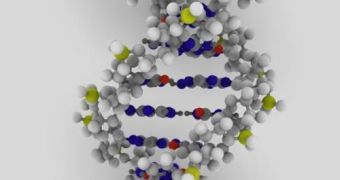Ever since the complex purpose of the DNA was first discovered, scientists around the world have been looking for a simple way of naming this vital part of every living thing. Now, as genetics becomes increasingly complex every day, the need for another word to designate DNA and its functions is so much greater. Yet, members of the scientific community prove to be rather slow in coming up with suitable names for the nucleic acid.
Previous attempts to renaming DNA saw the introduction of such terms as “double helix” (that is just the shape of the molecule, it does not designate its function), “blueprint” (too incomplete), “chemical building block,” “alphabet of life,” "book of life,” “computer code of life,” or even “symphony of life.” The last names are more suitable for proteins or amino-acids, rather than for the DNA itself.
One major obstacle in coming up with an appropriate term is finding a metaphor that describes DNA even to those with no background in biology. Basically, the researchers are now looking to emphasize the very essence of this molecule and its purpose. This is very important for the general public, because recent advancements in the field of genetics, which have tied various diseases to different genes, have brought the term DNA more and more into the public view.
And the scientific community believes that it's best to try to explain concepts to the people, rather than seek to hide behind the incredible complexity of genetics. In truth, this area of expertise is indeed one of the most complex fields of science, simply because investigators have to work with a system (the human body) they know very little about.
One researcher has captured what he thinks is the essence of the acid, in six words or less: “DNA: the web which spins the spider.” The idea has come to him after noticing the molecule's ability to “zip” and “unzip” itself, as in to replicate. This is very similar to what a spider does, when it eats its own web, only to spin it again in the future. Still, the international community is eager for more intuitive metaphors. If you have any suggestions, post them here, as a comment.

 14 DAY TRIAL //
14 DAY TRIAL //